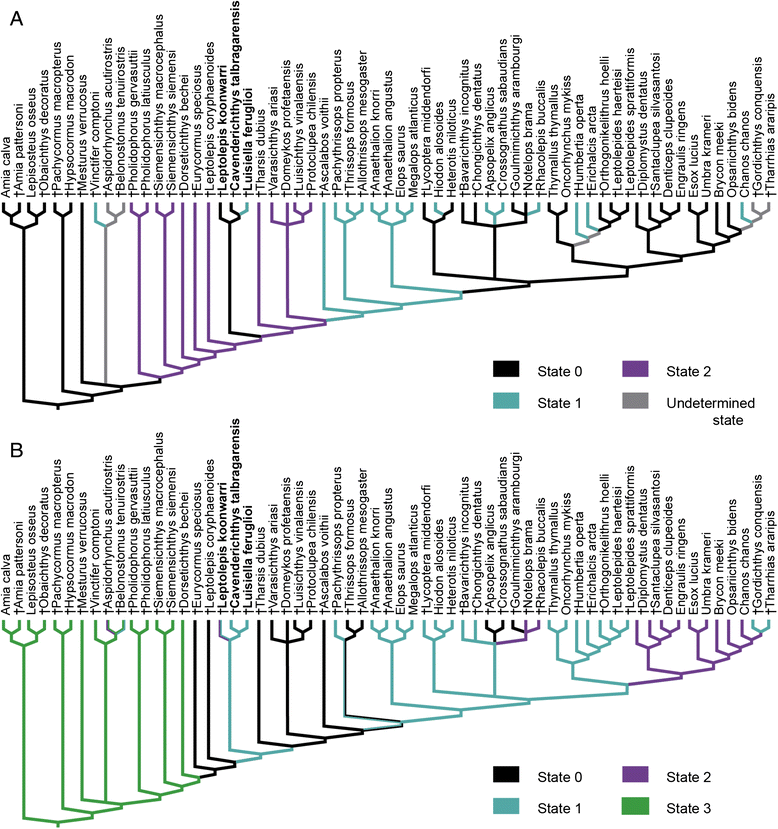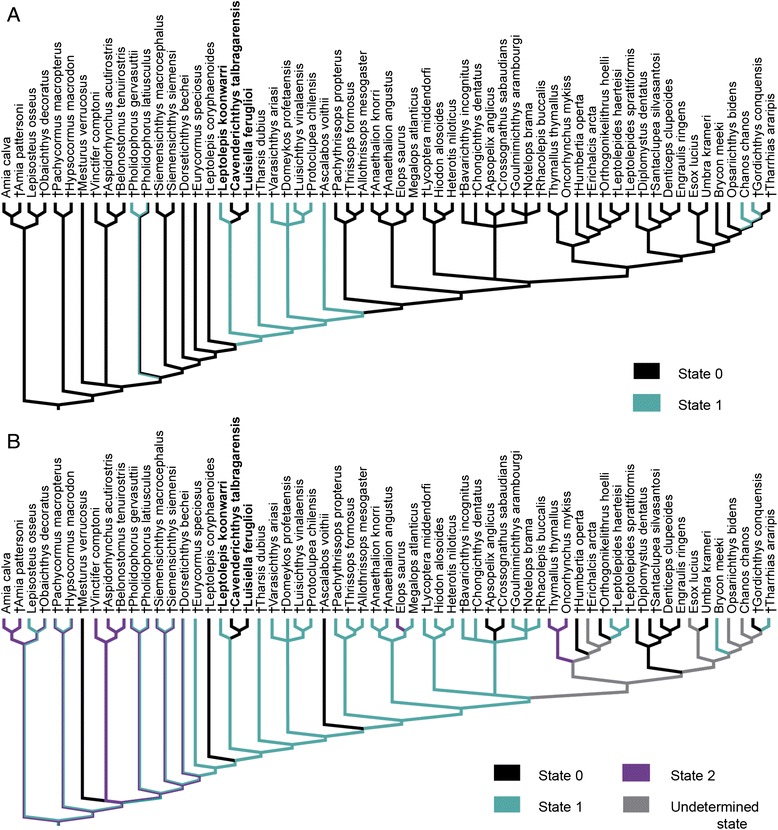Phylogenetic relationships of †Luisiella feruglioi (Bordas) and the recognition of a new clade of freshwater teleosts from the Jurassic of Gondwana
- PMID: 26630925
- PMCID: PMC4668602
- DOI: 10.1186/s12862-015-0551-6
Phylogenetic relationships of †Luisiella feruglioi (Bordas) and the recognition of a new clade of freshwater teleosts from the Jurassic of Gondwana
Abstract
Background: Teleosts constitute more than 99 % of living actinopterygian fishes and fossil teleosts have been studied for about two centuries. However, a general consensus on the definition of Teleostei and the relationships among the major teleostean clades has not been achieved. Our current ideas on the origin and early diversification of teleosts are mainly based on well-known Mesozoic marine taxa, whereas the taxonomy and phylogenetic relationships of many Jurassic continental teleosts are still poorly understood despite their importance to shed light on the early evolutionary history of this group. Here, we explore the phylogenetic relationships of the Late Jurassic (Oxfordian - Tithonian) freshwater †Luisiella feruglioi from Patagonia, in a comprehensive parsimony analysis after a thorough revision of characters from previous phylogenetic studies on Mesozoic teleosts.
Results: We retrieved †Luisiella feruglioi as the sister taxon of the Late Jurassic †Cavenderichthys talbragarensis, both taxa in turn forming a monophyletic group with the Early Cretaceous †Leptolepis koonwarri. This new so far exclusively Gondwanan freshwater teleost clade, named †Luisiellidae fam. nov. herein, is placed outside crown Teleostei, as a member of the stem-group immediately above the level of †Leptolepis coryphaenoides. In addition, we did not retrieve the Late Jurassic †Varasichthyidae as a member of †Crossognathiformes. The position of †Crossognathiformes within Teleocephala is confirmed whereas †Varasichthyidae is placed on the stem.
Conclusions: The general morphology of luisiellids is that of basal, stem Teleocephala; however, most of their synapomorphies have evolved independently in teleocephalans. Similarly, the resemblance between varasichthyids and crossognathiforms might be due to parallel evolution. In accordance to most teleostean phylogenies, our analysis shows that a major morphological change occurred along the stem line and are currently recorded at the level of †Leptolepis coryphaenoides. A stem-based total clade Teleostei has been accepted for this work.
Figures








References
-
- Eschmeyer WN, Fong JD. Species by Family/Subfamily. 2015. http://www.calacademy.org/scientists/projects/catalog-of-fishes. Accessed 18 June 2014. [Recalculated with each new version; based on current literature, this provides all available species names, valid species, and species described in the last 10 years by family/subfamily.]
-
- Arratia G. Phylogenetic relationships of Teleostei: past and present. Estud Oceanol. 2000;19:19–51.
-
- Diogo R, Doadrio I, Vandewalle P. Teleostean phylogeny based on osteological and myological characters. Int J Morphol. 2008;26:463–522. doi: 10.4067/S0717-95022008000300001. - DOI
Publication types
MeSH terms
LinkOut - more resources
Full Text Sources
Other Literature Sources

